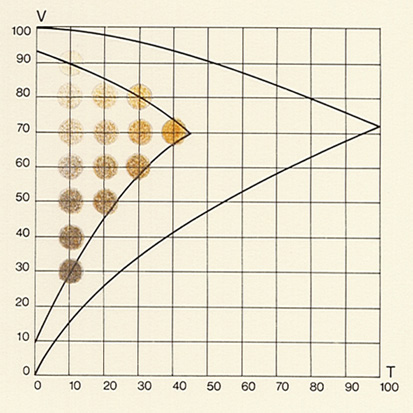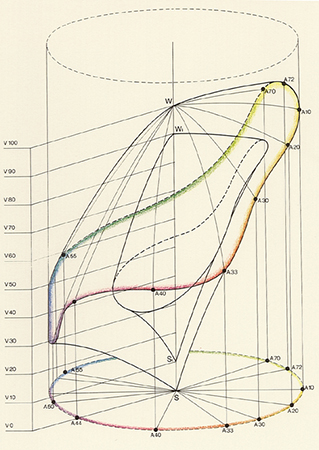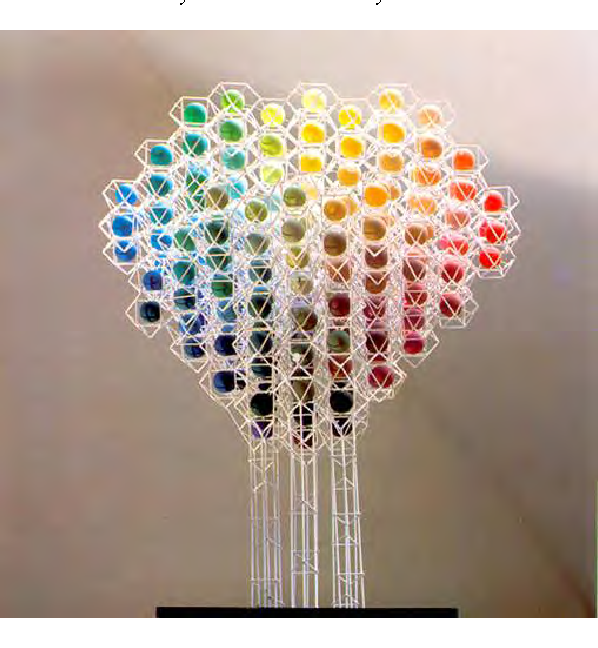The color system ‘Coloroid’ was originated in Hungary, developed between 1962 and 1980 by the Professor Antal Nemcsics. The objective of this arrangement was to provide technical and artistic help to architects involved in colored environmental design. There was no contemporary color system that fulfilled the requirements stipulated for color planning.
In August 2000, the Coloroid system has been registered as Hungarian Standard, and used as the main colour system.
The system is operated with the three parameters of color-hue, saturation and brightness.
Basically, the value ‘T’ stands for saturation, or purity of the color, the cylinder is created around a 48-part color circle ‘A’ or wavelength, and the ‘V’ is the luminosity, the higher it gets, the luminosity is higher, and vice versa.
The form that it creates is a modified cylinder based on ‘psychosomatic scales’.
The guiding principle behind the system is to show the aesthetic distance between colors as being uniform, due to the fact that the 48 different colors are being located at approximately identical number of harmony intervals to each other. Within this, as the smaller perceptual volume defined by the limit of colors, it is possible to reproduce with physical media (material, pigment colors).
The interesting part of this system for me is the idea of harmony, and how it can be defined or create with a simple linear or geometrical combination of colors.



